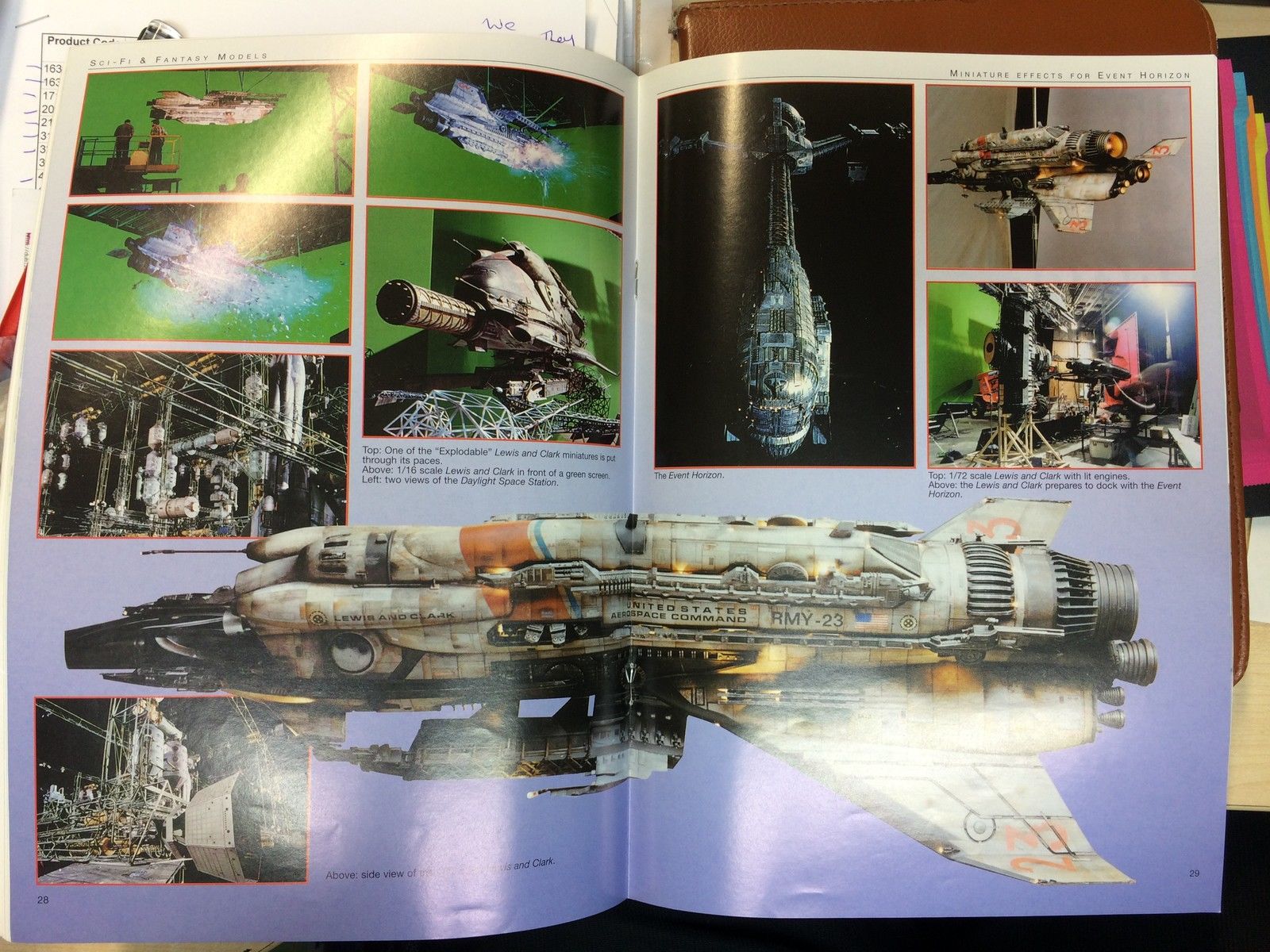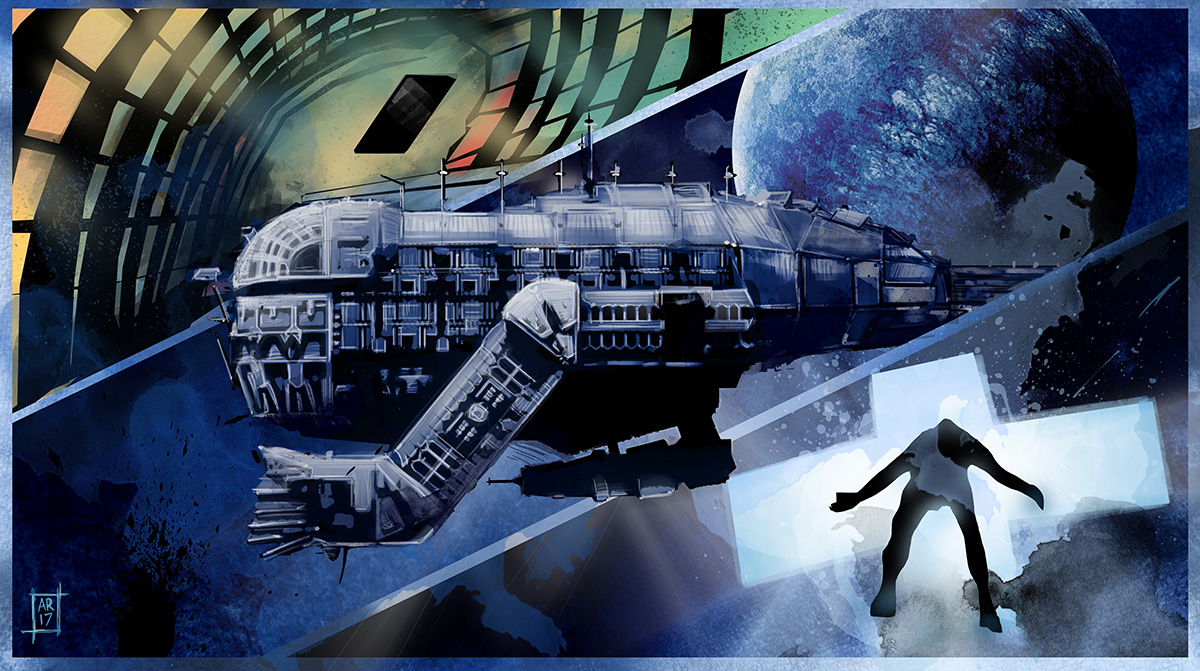
“Ask any VFX artist about their worst shot and I bet they can tell you the shot name. On Event Horizon, M255 was that shot for me.” – Sue Rowe
Now a visual effects supervisor at Sony Pictures Imageworks, Sue Rowe was back in 1997 a sequence supervisor at Cinesite (Europe) on Paul W.S. Anderson’s sci-fi horror space adventure, Event Horizon. Here, one of her tasks included a challenging composite for a shot – named M255 – that melded motion control plates of a miniature Lewis and Clark ship in the film with live action principal photography.
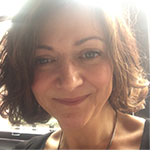
For the film’s 20th anniversary, Rowe dives back into that monster of a shot and how she managed to pull it off, thanks to hours of work and sleepless nights. And she recalls a few other key memories from the production, one of which involved the clever use of cornflakes.
vfxblog: What were some of the ways compositing was being done at that time, in terms of tools and also how footage would be being brought into a facility?
Sue Rowe: Back then we were shooting on film so each frame of film was scanned and digitised. Motion control shots were shot in multiple passes up to 10 in some cases. Key light, spot lights, head light, atmos passes. etc. The motion control rigs were huge machines which weighed a tonne. Often the shoot would take 2-3 days to capture all the passes. Over the 2-3 days the studio floor would warp under the weight, so not only did we have a problem with film misalignment we had the weight of the MOCO rig on a wooden floor to take into account!
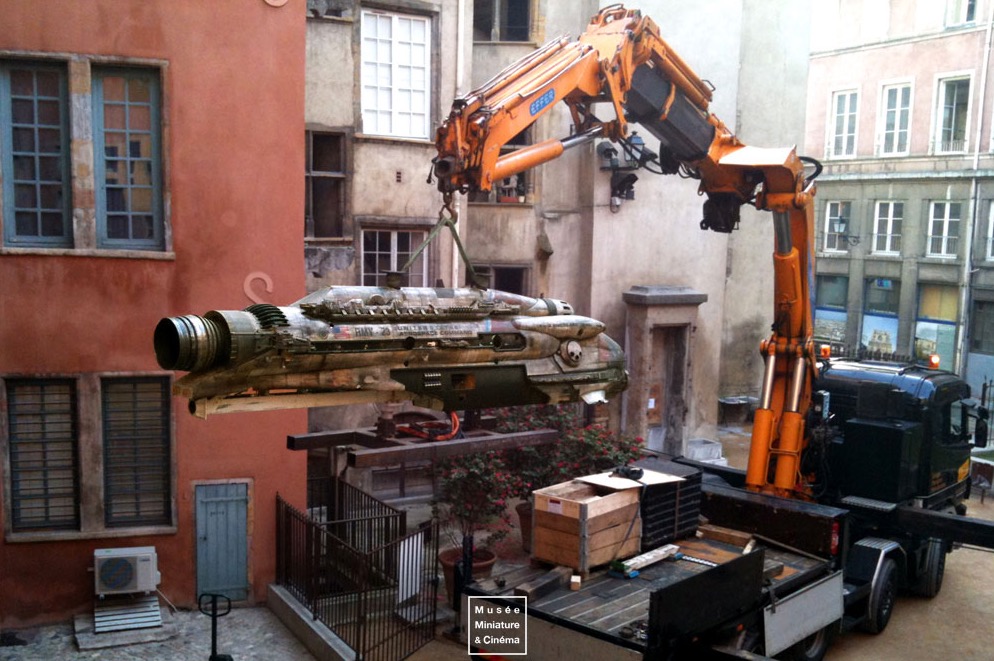
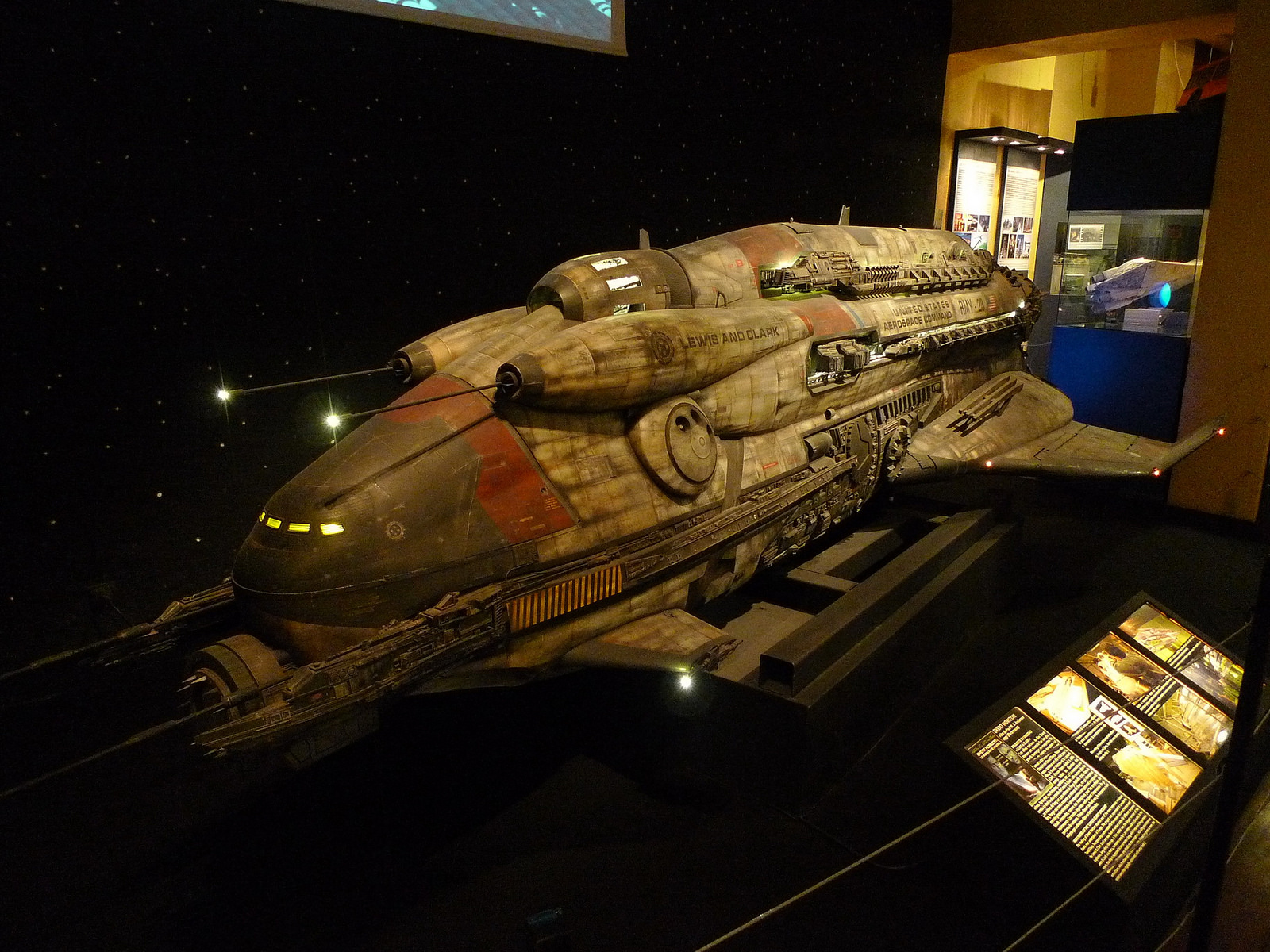
vfxblog: For M255, can you talk about the various elements that had been shot motion control or produced in CG? Had any planning of the shot been done (such as boards, previs, rough comp) at all?
Sue Rowe: The shot was not previs’d, it was a few lines from the mind of the director Paul Anderson. The VFX sup Richard Yuricich and the miniature cinematographer Dave Stewart designed the shot, I guess.
I had a video comp of the shot and was asked to match to it. It consisted of at least 4 L.A. plates, which needed to seamlessly integrate with each other. We started as an exterior shot at the tail of the space ship (the Lewis and Clark) then it traversed along the side of the ship and came in close to the cockpit of the miniature model, it was supposed to look like it was all one shot traveling in through the window and on to the monitors inside the ship. To do this required melding many different plates.

The miniature model didn’t hold up when the camera got close so the plan was to join the exterior and interior plates in post. So on set there was a second pass, the shot was supposed to start on the outside of the LA set and travel through the cockpit glass past the pilot and finish on the TV screens in the background. However they didn’t build the exterior of the set, only the windowpanes.
The resolution of the miniature meant that the model looked soft if we went too close, so we took Hasselblad photos of the miniature model at high res and I used these to make up the outside of the live action set. We then traveled through the glass past the pilot and then on to a bank of monitors on the set. This was before we had live feeds to on set monitors. In all I must have had about 25 elements in one composite. I remember that to actually render this shot almost bought down the facility – all the other shots had to go on hold!

Richard Yuricich came in to see the shot with Dave Stewart, they took a look at it and said, wouldn’t it be cool if we could smooth out that moco move and re-time it so it travels in faster, then speed ramp it slower etc etc. I was a bit green back then so I said, ‘Yeah, I can do that.’ I worked on that shot for 3 months. It was the hardest thing I ever did.
One Saturday night I was working late and Richard and Dave called by to see how it was going. They told me they needed the shot for Monday. So I worked all night and all Sunday on it until it was done. I slept under my desk on Monday morning, when they came in they said it was good enough! I was very happy.

The matchmoving of all the plates was the hardest thing back then, that’s no longer the case – matchmoving software has developed so much in the last 20 years. For example, on a similar recent show Independence Day: Resurgence we did similar shots with real time tracking on set supplied by Ncam. Now DOPs and directors can line up shots using virtual sets and a key mix to actors on a green screen set. What was hard then is now comparatively easy.
vfxblog: Any other memories from Event Horizon?
Sue Rowe: My favourite shot in the film was of Sam Neill with his own eyes gouged out. Charlie Tait and Dave Houghton were fresh out of animation college back then and they took on this shot. They used a cheap flatbed scanner to scan a cabbage leaf and a raw steak combo to make the interior eye sockets. One day my Mum came to the office to see what her ‘little girl’ was up to in this new crazy film industry and she saw us working on this shot. Charlie was adding blood pulsing out of the eyes – she ran out of the office screaming. I was actually pretty proud of the extra attention to detail. I heard that the director loved it!
My personal fave shot is the electrical storm over Saturn that I did. I had animated the clouds to make then look like they were illuminated from within. Each frame was hand painted. Creating digital clouds that you see in Pixar films now was impossible back then. These clouds were digital matte paintings, to render self illuminating clouds in 1997 would have taken years of R&D, so we faked it by being creative.
I do have a funny story about one of the shots where the Lewis and Clark explodes! Dave Stewart told me that they filled the miniature full of cornflakes painted black so that when it was exploded at 120 fps you would get loads of debris catching fire. The shot was a great combo of well thought out motion control and so great CG work. My colleague Chas Cash made the awesome green shockwaves to enhance the live action explosions using the classic Maya Marble textures! We didn’t have shader writes back then so you had to be creative with the procedural textures that Maya gave you. I still think they hold up to this day!
vfxblog: 1997 was such a big year in VFX films, but I also think it showcased what the London shops were up to – can you remember what the feeling then was about work done in London compared to work done in Hollywood?
Sue Rowe: In 1997 we didn’t know if we could do it, but we also didn’t know that we couldn’t, so we just tried it! The team of artists I was working with, like me, had degrees in animation and then took masters in computer animation. I studied for 4 years to become a VFX artist. So we were a group highly skilled creatives, passionate about filmmaking.
Many of those artists are now VFX supervisors themselves, so there was a drive back in London in the early days to prove ourselves to be as worthy as Hollywood. VFX was a new industry on both sides of the pond, so we were all trying new technologies to make movies, it never felt like us and them, we all just felt like we were at the start of something new and exciting as a genre.
Looking for more retro materials from the production of Event Horizon? Here’s a run-down of just some of the visual effects coverage and videos about the film.
Cinefex #73: – http://www.cinefex.com/backissues/issue73.htm
American Cinematographer: http://www.theasc.com/magazine/aug97/event/fx/pg1.htm
VFXHQ: http://vfxhq.com/1997/event.html
Behind the scenes video from modeller Chrissy Howes:
Berton Pierce’s interview with modeller Simon Weisse:
Making of Event Horizon documentary:
Sci-Fi & Fantasy Models, #25:
